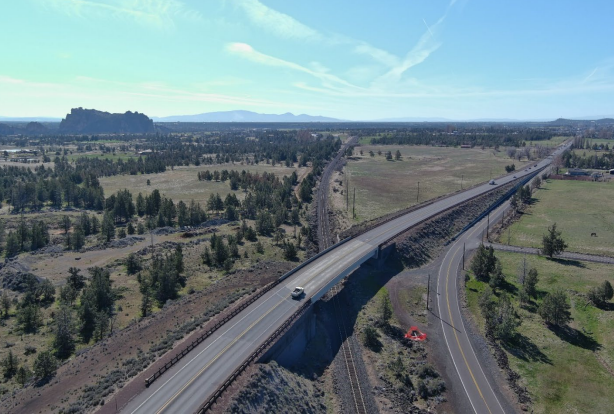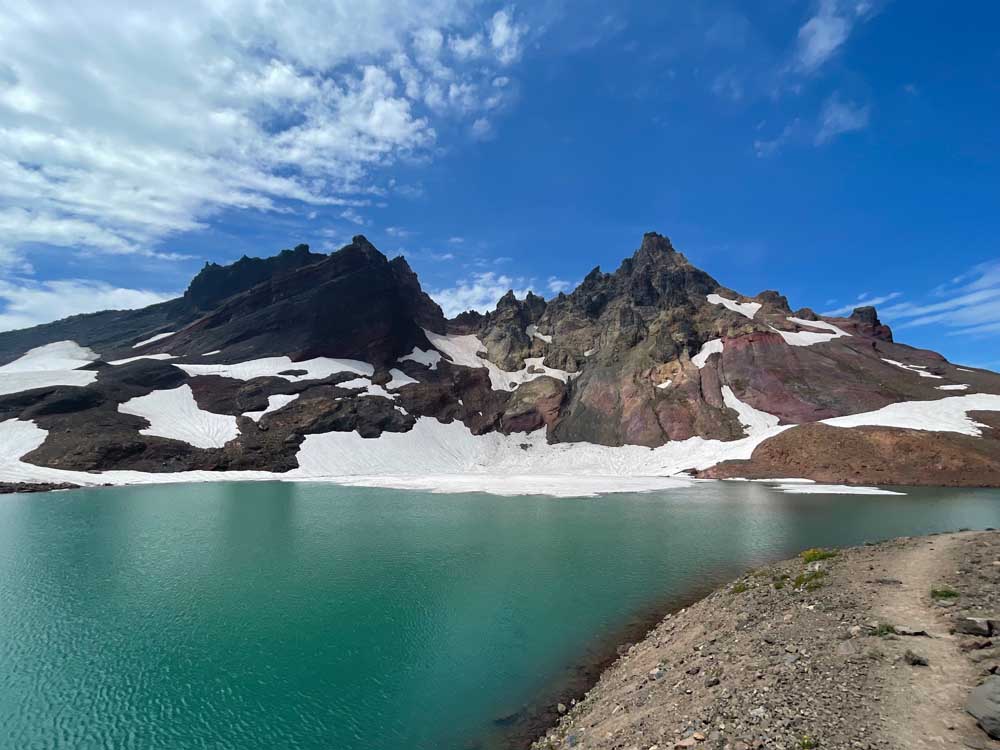ODOT wrapping up safety study on dangerous U.S. Highway 97 segment
Published 5:30 am Monday, December 9, 2024

- U.S. Highway 97 spans the Burlington Northern Santa Fe Railway in between Madras and Terrebonne, where the Oregon Department of Transportation is conducting a traffic safety study.
A 15-mile stretch of U.S. Highway 97 in southern Jefferson County has been under the microscope of the Oregon Department of Transportation for the better part of a year in an attempt to find out what makes it one of the most dangerous segments of one of the most dangerous roads in the state.
Monday presents another opportunity for the community to learn more and provide feedback on the ongoing traffic safety study scheduled to wrap up in early 2025.
Trending
The state transportation agency is hosting an open house Monday from 5 p.m. to 7:30 p.m. at Madras High School, 390 SE 10th St.
ODOT has already published a draft of the study outlining a handful of safety measures with varying measures of cost. Options include roundabouts, medians, turn lanes, intersection and access improvements and safer spaces to turn around.
Much of the area in question, a rural stretch from Madras to where the highway spans the Crooked River canyon, features a single lane in each direction with several passing lanes and zones.
“The corridor is really lacking some of the modern safety fixes we see currently being installed in between Bend and Redmond,” said Ken Shonkwiler, an ODOT engineer leading the project.
U.S. Highway 97 changes for ODOT’s Bend project
Trending
The study compiled five years of recent crash data along with traffic volumes and intersection analysis to get an idea of why traveling from Terrebonne to Madras is particularly dangerous.
“We know that we’ve had an uptick in crashes in the last five to 10 years,” Shonkwiler said.
Unsafe highway
From 2017 to 2021 there were 187 crashes in that stretch of highway. Seven of those were fatal and 13 caused severe injuries, meaning 10% of all crashes fell into those two categories.
Three intersections ranked in the top 5% to 15% of Oregon state highway sites with the most fatal and severe crashes, according to an ODOT index.
One of those was the intersection of Highway 97 and Bear Drive, where Nadia Rankov Adams was killed in 2020 when a semi-truck slammed into her car head-on after veering to avoid a line of vehicles. The estate of the Redmond woman then sued the ODOT and Jefferson County for allegedly maintaining an “unreasonably safe” intersection, stating Rankov Adams suffered from “fear of impending injury or death” over her Redmond to Madras commute. The lawsuit was ultimately dismissed.
Rear-end crashes constituted nearly half of all crashes and one-quarter of fatal crashes during the study period, second only to head-on collisions in the latter category.
The top five crash causes include driving too fast, tailgating, failing to yield the right-of-way, inattention and failing to avoid the vehicle ahead, according to the study.
Some community members have called for widening the highway from two to four lanes for the length of the Terrebonne-to-Madras stretch. But the study rules that option out, acknowledging that while a four-lane road might prevent crashes from unsafe passing maneuvers where extra lanes don’t exist, many crashes still occur in areas where passing lanes are present.
The study also cites the “incredibly high and potentially unrealistic” cost of widening the highway, plus potential complications with right-of-way acquisition.
According to ODOT’s metrics, the tools with the highest chances of reducing crashes are roundabouts, buffered right turn lanes, surface treatments to add friction to combat slick roads and improve driver sight distance at intersections.
Costly fixes, increasing traffic
Costs could add up quickly if more than one of those solutions are applied, with estimates coming in at $12 million to widen shoulders, medians at $1.5 million per mile and roundabouts and other intersection improvements at $8 million apiece.
The study is on track to wrap up in early 2025, but final designs couldn’t be procured until the project has funding in hand.
While changes to the roadway itself could be on the horizon, officials are also considering increased police patrols as a strategy to reduce crashes. The dangerous roadway has seen an increase in traffic in the past 20 years, though not exponentially, rising from about 14,000 vehicles a day to 16,000 vehicles per day. That number will rise to above 20,000 daily vehicles by 2044, ODOT projects.
More cars on the road generally means higher chances of crashes, said Jefferson County Sheriff Jason Pollack. Considering growth trends, Pollack said the road from Terrebonne to Madras is on an inevitable course to be expanded.
“I think it would be imperative for us to start moving in that direction,” he said.
For now, he believes increased enforcement can curb the crash trend with the right resources. He said his staff is stretched too thin to have a deputy on traffic control around the clock. His office requested $1.5 million annually from the state to fund a five-person traffic team to work Highway 97 alongside Oregon State Police in Jefferson County.
“If the state has the funding to be able to help local law enforcement increase the presence, then I think the state should step up and increase the ability to provide that safety and enforcement on our state highways.”
The safety study will wrap up as state legislators head into the 2025 legislative session with funding for ODOT at the top of the to-do list after transportation officials signaled funding woes will lead to cutbacks in maintenance and shortfalls for big projects across the state.








